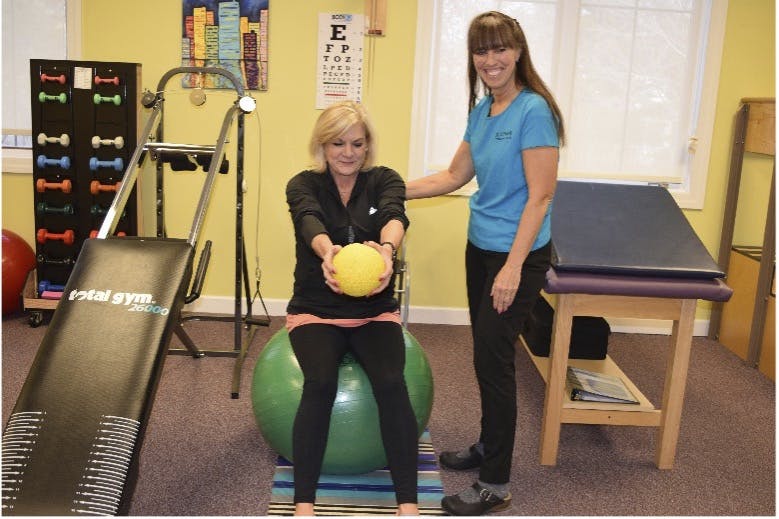Spring is the perfect time to begin your outdoor running program as the weather gradually warms up. Join our Huntley therapist, Linda Raby, as she runs Chicago's Shamrock Shuffle 8K on March 24th to kick off the spring running season. This will be her 4th Shuffle, and she plans to run her second half marathon in the fall. Also, join Linda and the staff of 1st Choice Physical Therapy on April 6th at the Huntley Don't Be Fooled…By a Disability 5K Run/Walk benefitting the Law Enforcement Torch Run for Special Olympics Illinois. 1st Choice Physical Therapy is proud to be a sponsor of this event alongside the Huntley Police Department. For more information, go to https://support.soill.org/Dontbefooled5k2024 to register or donate.
Linda shares her tips on how you can improve your performance and gain speed while reducing injury. Incorporate these tips as much as possible into your routine to prevent boredom, target your body in different ways, minimize injury, and challenge your fitness.
Warm Up and Cool Down
Start each workout with dynamic drills such as side lunges, straight leg lateral and forward swings, walking knee hugs, and walking quad stretches. Finish with a cool down of walking as well as static stretches of major muscle groups such as quads, hamstrings, gastrocs, and hip flexors. This allows you to gradually ease your body in and out of intense activity. Stretching after you run will help to prevent lactic acid buildup, which reduces swelling and muscle soreness.
Eat Well
Your diet plays a role in your running performance, especially the foods you eat right before you run. 3-4 hours before a distance run, eat fresh fruits, berries, and melons. Load up on fresh and cooked vegetables and carbohydrates such as whole grain bread, oats, and energy bars. Protein intake should be moderate. The day of the run limit your intake of foods high in fat and fiber as well as sugary or processed foods to avoid food that takes time to digest. You may also want to avoid dairy if it causes stomach discomfort. 30-60 minutes before the run, eat a small pre-run snack following the same rules, but keep portions small.
Hydrate
Drink plenty of water along with healthy drinks such as coconut water, herbal teas, or sports drinks to stay hydrated. Avoid sodas and other drinks that contain alcohol, sweeteners, and dairy. 17-20 ounces of water should be consumed 3-4 hours before a distance run, and 5-10 ounces 30-60 minutes before. Consider wearing a hydration pack to hydrate during long runs, especially on hot days.
Maintain a Moderate Body Weight
Maintaining a moderate body weight can help you increase the intensity of your training and run faster.
Perfect Your Technique
Improving your form and body mechanics will enhance performance and reduce injuries. Avoid over-striding (keep knee over ankle at initial contact), maintain a tall posture, relax your shoulders, keep your hands relaxed, engage your core, move arms from shoulders instead of elbows, swing arms with hands at hip level, do not bounce or rotate excessively, and shorten your running stride.
Purchase New Shoes
Invest in new shoes every 300-500 miles or 4-6 months. Have your gait analyzed by a 1st Choice Physical Therapist, then go to a reputable running shoe store with your gait information to pick out the best shoe for your form. Bring in your old running shoes so they can examine the wear pattern and decipher your running tendencies. Customized orthotics can also be purchased at 1st Choice to help reduce injuries. New shoes should be broken in 3-4 weeks before a race.
Dress the Part
Choose clothes that are lightweight, moisture wicking, wind resistant, and form fitting. Make sure your clothes don't rub or chafe your skin, especially when running long distances. Layer properly and cover your extremities in cold weather.
Strength Train
The stronger you are, the easier it'll be for you to use proper body mechanics to run quickly with ease. Injuries are reduced by improving strength in your core, glutes, and legs. To build muscle, lift weights and perform bodyweight exercises such as squats, lunges, bird dog, one leg deadlift, glute bridges and planks.
Set an Intention
Create an intention for your training plan and stick to it instead of running at random. This allows you to have a purpose for each session and work toward a specific goal. Vary your plan to include longer endurance runs, high-intensity training, tempo runs, hills, cross training for cardiovascular endurance and strength training. This variety decreases your mileage over the long run which has proven to reduce overuse injuries in runners.
Run Sprints
Get out on the track and run a few sprints, even if you normally run longer distances. Sprint training has been shown to improve endurance, strength, and power performance in runners while requiring less time and mileage than other types of training. Be mindful of performing a proper warm up and cool down with sprint training.
Caution with Training
Use proper form and technique to prevent injuries and avoid training too hard. Start slowly if you're a beginner. Stop if you experience any pain or injuries or feel faint. Gradually increase your mileage and pace every few weeks. Try to increase either speed, time, or mileage by no more than 10% each week, and increase only one of the aforementioned categories at a time. If you miss days, don't try to double up your training on other days or do more than usual.
Get in touch with a 1st Choice Physical Therapist if you want to set realistic goals and amp up your training schedule, or if you can't recover from a nagging injury. They can help you to run at a faster speed and push beyond your boundaries to reach your full potential while minimizing your risk of injury.
Make sure to give Linda a fist bump if you see her out on the trails or at the races.
Happy running!





